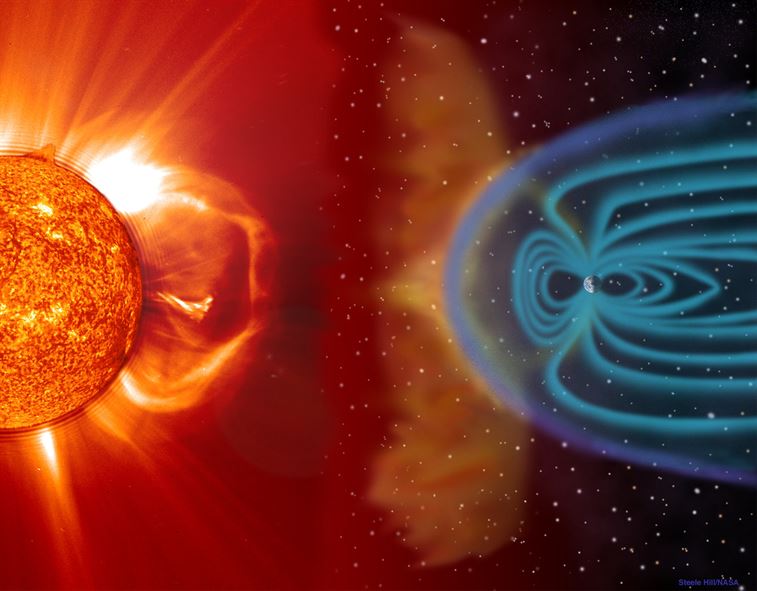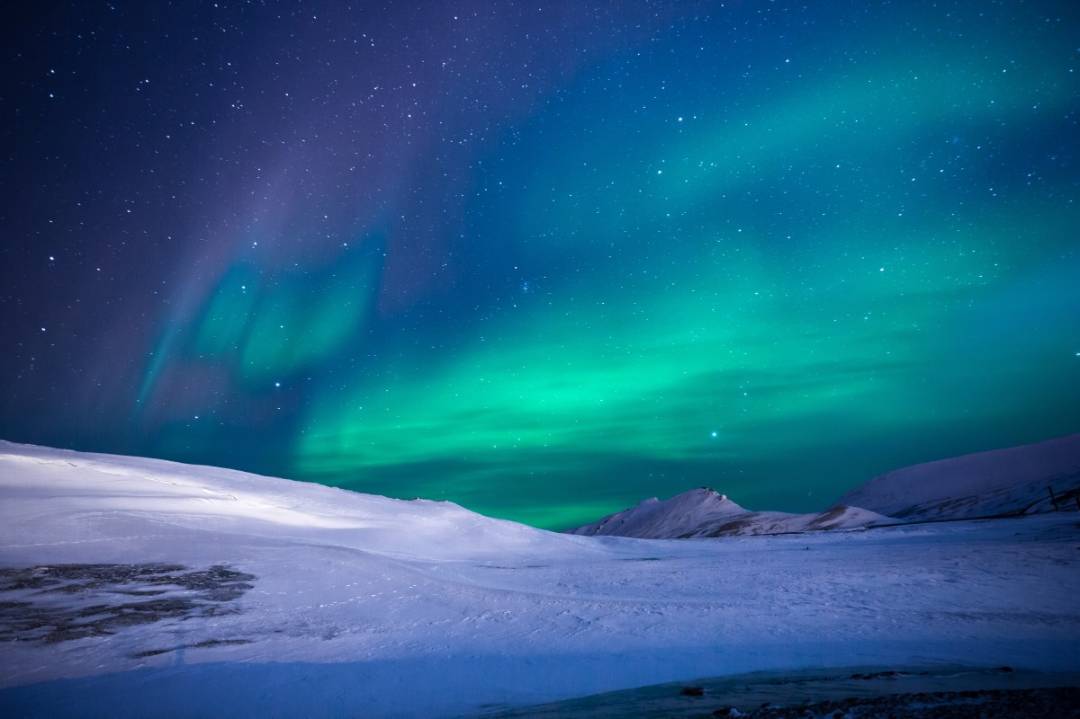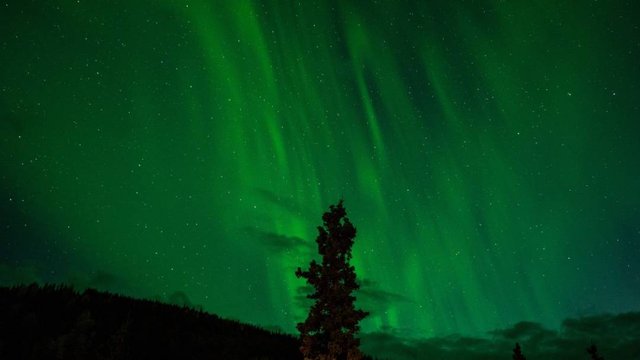Arsenal won last time out, we are in the quarter finals of the Europa league, which is the 2nd tier of European football. Not like I care about Arsenal though, my profile still states that I'm a former arsenal fan (☺ ☺).
I want to appreciate everyone that dropped by to give a comment on my previous post. I'm saying a big thank you for the kind words. I hope to see you again on this one.
Today, I want to delight you with the science behind the beautiful yet mysterious Aurora Borealis or simply known as the northern lights. When Steem price was high, I was thinking about vacation destinations around the world, I saw great places. But one particularly caught my attention, Norway. Which is said to be the best place to see the northern lights. I'd just seen the northern lights on TV, it was a beautiful spectacle of ethereal light shimmering across the sky. The scientist in me got curious as to what causes these lights and how exactly does it happen. Well, I found out and you are about to too. Take a front row sit and get your bucket of popcorn.
Random fact about Auroras
All Northern Lights have separate pattern and also different colors. No one has seen two matching ones.

What are Aurora Borealis
Auroras were thought to be the first light of the morning. Auroras often referred to as northern lights, polar light or even southern lights are natural lights beaming upon the night skies. Mostly seen in places within the high latitude region.
History of Auroras
Over the years, the light as been a great source of speculation and myth. Paintings in caves of France which are said to be over 30,000 years have illustrations of this lights.
In the medieval times, the aurora lights were thought to be an omen of war and destruction as nobody had the knowledge about the causes of these lights.
Around 1616, Galelio Galilei described them as Aurora Borealis, combining the names of Roman goddess of dawn (Aurora) and the Greek name for wind (Boreas).
What causes Auroras
The sun is 90 million miles away, yet it's influence extends far beyond it's evident surface. Big storm on the sun send flurry of charged solar particles flying across space.
When the earth is in the way of the charged particles, the earth's magnetic field and the atmosphere interact. As the particles nears earth, it distorts the earth's magnetic field and allows some of these particles to make way into the earth's atmosphere at the magnetic north and south pole.
When these particles from the sun collide with the atoms and molecules of earth's atmosphere, they excite those atoms thereby causing them to glow up.
An atom consist of a nucleus and seas of electrons swarming round it in an orbit. Once, the charged particles from the sun hits the atoms in the earth's atmosphere, then electrons gain enough energy to move into higher energy orbit further away from the nucleus. When electrons move back to lower-enegry orbits, it releases a photons (particles of light). This process creates the alluring aurora.
The magnetic and electrical forces react in a constantly moving combination. This moves and flow are seen as auroras shimmer along the atmosphere with atmospheric currents up to 20 million amperes and 50,000 volts. ( FYI, the circuit breaker in homes trip off when current flow are just over 15 - 30 amperes and 150 volts).
This occurence is similar to what happens in neon signs. Electricity excites the atoms in the neon gas encompassed in the glass tube of a neon sign. That's why those signs show off radiant colours. The principles are the same, just that the Aurora is on a much larger scale.
What causes the colours
The northern lights are seen in different colors from pink, blue, green, yellow, violet and sometimes orange and white. Majorly, when the particles collide with oxygen, that's when yellow and green lights are produced. While collision with nitrogen brings about red and violet and sometimes blue lights.
Type of collision and altitude of collision also play a part in what color appears in the sky. For example, when green lights are produced when collision occurs at around 150 miles, blue up to 60 miles. And also if the collision occurs with atomic nitrogen blue lights are seen while collision with molecular nitrogen brings about purple lights.
This lights may display as fixed band of lights or as a dancing screen of alternating colors when solar flares are strong.

Conclusion
The best time to see these lights is during winter due to the less pollution of lights around this time. As mentioned earlier, Norway, Finland and Sweden offers cool viewpoint to see these alluring lights.
If you're ever chanced to see the northern lights, I hope you will be able to explain to the Wall Street guy standing next to you who kept wondering how this lights come about that it's just solar flares colliding with atoms in the sky.
References
If you write STEM (Science, Technology, Engineering, and Mathematics) related posts, consider joining #steemSTEM on steemit chat or discord here. If you are from Nigeria, you may want to include the #stemng tag in your post. You can visit this blog by @stemng for more details. You can also check this blog post by @steemstem here and this guidelines here for help on how to be a member of @steemstem. Please also check this blog post from @steemstem on proper use of images devoid of copyright issues here.


Even where I am from in Canada ( Alberta ) they get pretty crazy there!
Downvoting a post can decrease pending rewards and make it less visible. Common reasons:
Submit
You have seen it before, must be heavenly. I hope I get the chance to do so too.
Downvoting a post can decrease pending rewards and make it less visible. Common reasons:
Submit
Congratulations! This post has been upvoted from the communal account, @minnowsupport, by addempsea from the Minnow Support Project. It's a witness project run by aggroed, ausbitbank, teamsteem, theprophet0, someguy123, neoxian, followbtcnews, and netuoso. The goal is to help Steemit grow by supporting Minnows. Please find us at the Peace, Abundance, and Liberty Network (PALnet) Discord Channel. It's a completely public and open space to all members of the Steemit community who voluntarily choose to be there.
If you would like to delegate to the Minnow Support Project you can do so by clicking on the following links: 50SP, 100SP, 250SP, 500SP, 1000SP, 5000SP.
Be sure to leave at least 50SP undelegated on your account.
Downvoting a post can decrease pending rewards and make it less visible. Common reasons:
Submit
Wow always a sight to behold Auroras!
I have not seen one physically but i have seen a lot on screens. Its quite interesting to know the science behind their formation.
Nice article sir!
Downvoting a post can decrease pending rewards and make it less visible. Common reasons:
Submit
We can always go to Norway anytime.
Downvoting a post can decrease pending rewards and make it less visible. Common reasons:
Submit
We?
Downvoting a post can decrease pending rewards and make it less visible. Common reasons:
Submit
I am planning to go there to hunt one down. It's not actually easy or simple. You have to stay for two weeks and in a certain period of time and be lucky and have clear skies. And Norway is expensive :D And time is limited to only wait for the Aurora.
Downvoting a post can decrease pending rewards and make it less visible. Common reasons:
Submit
Awesome phenomenon. My first time of reading in details about the light. Thanks .
I need to ask, are you in the steemstem discord channel? If not, feel free to join a group of amazing scientists and science enthusiasts here https://discord.gg/KrWykYs
Downvoting a post can decrease pending rewards and make it less visible. Common reasons:
Submit
I am on the discord channel. Thanks
Downvoting a post can decrease pending rewards and make it less visible. Common reasons:
Submit
What a beautiful sight! They look heavenly.
Downvoting a post can decrease pending rewards and make it less visible. Common reasons:
Submit
This was well written and i absorbed well. I love beautiful things. Thumbs up @Addempsea
Downvoting a post can decrease pending rewards and make it less visible. Common reasons:
Submit
Both thumbs? 😂😂
Downvoting a post can decrease pending rewards and make it less visible. Common reasons:
Submit
Downvoting a post can decrease pending rewards and make it less visible. Common reasons:
Submit
Aurora this was surprising when i read about it. I am glad to say i read it first here. I wouldn't mind visiting Norway for beautiful sites like this.
Downvoting a post can decrease pending rewards and make it less visible. Common reasons:
Submit
It's a nice vacation spot.
Downvoting a post can decrease pending rewards and make it less visible. Common reasons:
Submit
Being A SteemStem Member
Downvoting a post can decrease pending rewards and make it less visible. Common reasons:
Submit
Perhaps I need to visit Norway as well to see the lights, please don't leave me behind @addempsea & @adetola... Seems @rharphelle is not interested
Downvoting a post can decrease pending rewards and make it less visible. Common reasons:
Submit
There is no Aurora article without a 4k timelapse Youtube video with chill music. Trust me :D
Don't be afraid to use gif's or video to make your article more dynamic. Plus, colors and shapes slowly moving are a relaxation factor so you would actually get your readers relaxed and with a better experience of an Aurora right before they get to the vote button. :P
It's why we are scientists! Cheers!
Downvoting a post can decrease pending rewards and make it less visible. Common reasons:
Submit
Thanks for the feedback , are YouTube videos not subjected to copyright issues?
Downvoting a post can decrease pending rewards and make it less visible. Common reasons:
Submit
Not all. You do have a filter after you search "aurora borealis" go to "filters" in the right and you have the option to select 4k and creative commons.
This is the second video I got out of it!
:D
Downvoting a post can decrease pending rewards and make it less visible. Common reasons:
Submit
Thanks so much for this.
Downvoting a post can decrease pending rewards and make it less visible. Common reasons:
Submit
Nice and beautiful
Downvoting a post can decrease pending rewards and make it less visible. Common reasons:
Submit
very informative
vote me
https://steemit.com/breeding/@wakashyder/the-breeding-season-diaries
Downvoting a post can decrease pending rewards and make it less visible. Common reasons:
Submit
very informative
vote me
https://steemit.com/breeding/@wakashyder/the-breeding-season-diaries
Downvoting a post can decrease pending rewards and make it less visible. Common reasons:
Submit